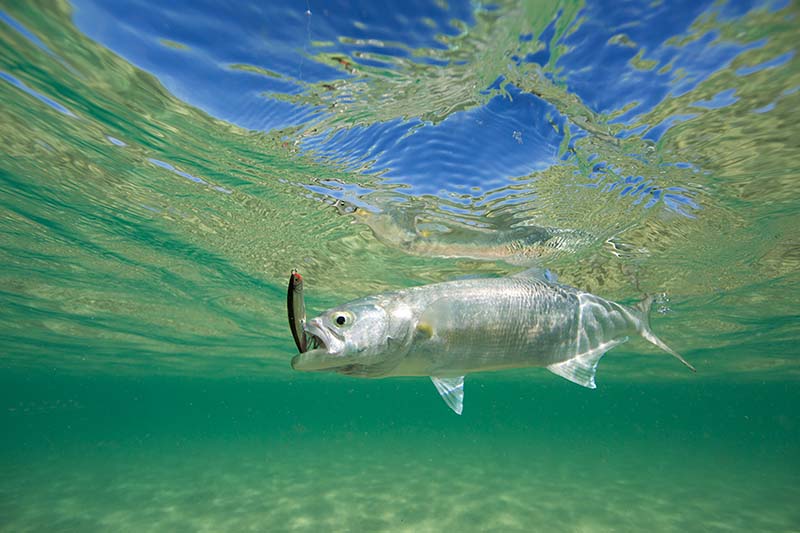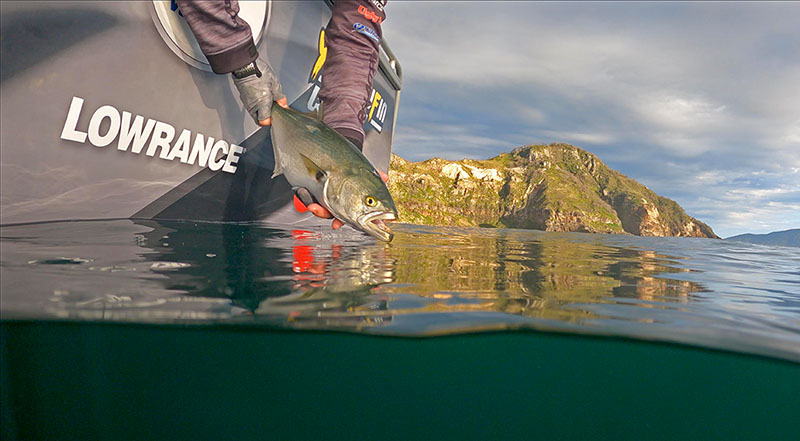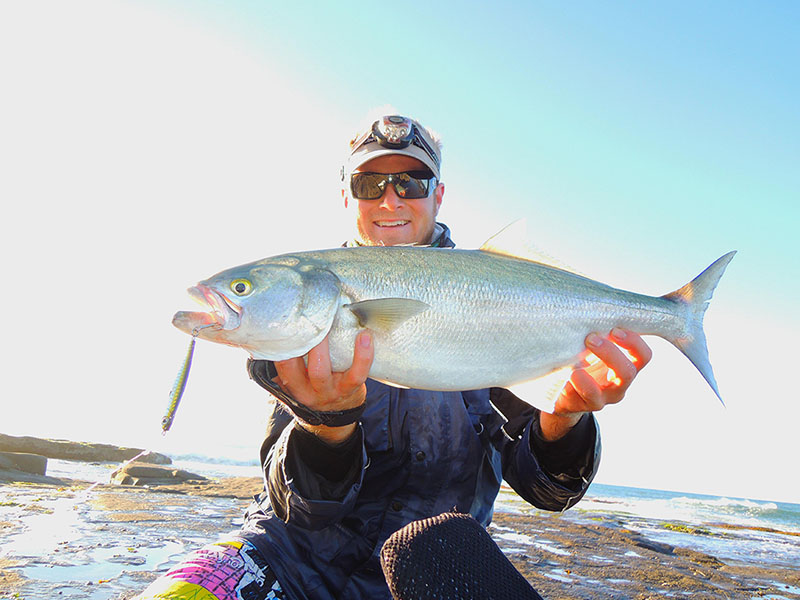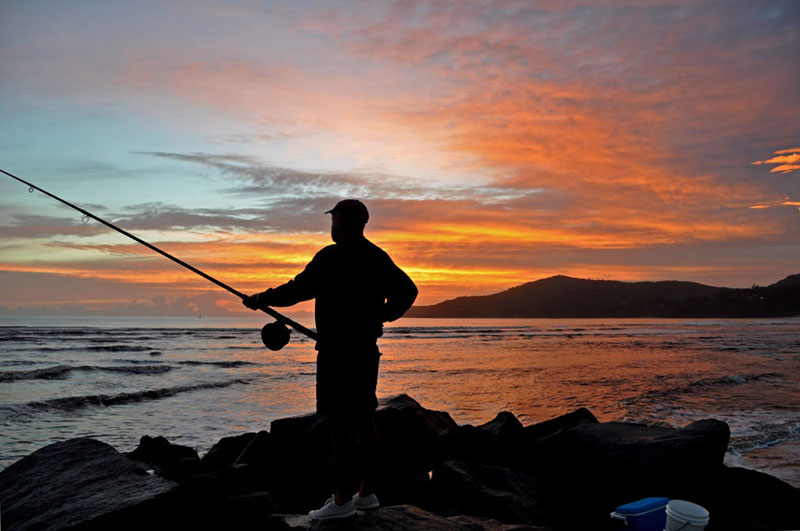Tailor, another fish species that many Aussie anglers hold close to their heart. Although it may not be their devilish good looks that make these feisty fish so appealing, tailor tick just about every other box in the book. From hook-up to cook-up these fish are fantastic - and they have attitude with a set of chompers to match! Whether you're a fishing enthusiast or a complete newbie, locking horns with a few of these toothy critters is sure to put a smile on your dial and give you That BCFing Feelin'. So, to help get you in the spirit our BCFing experts have thrown together this epic how-to guide. Hope it comes in handy!

Where to catch tailor
Tailor can be found all throughout the southern half of Australia, from Hervey Bay in Central Queensland, all the way round to the mid-west coast of Western Australia, you can even target tailor in Tassie! If you're looking for prime tailor real estate, there's nothing they like better than a beach front view. Like many other beach dwelling beasties, tailor are very particular with where they call home and not just any stretch of water will do. It's important to look for deep gutters with a clear entrance and exit point (calm water that's close to shore is normally a dead giveaway). These guys are a schooling fish and as such love company, so if you find a good-looking gutter with a few fish, you're normally in for an epic day. Although there's no denying tailor love our beautiful beaches, that doesn't mean it's the only place they'll take up residence. Many smaller models think our rivers and estuaries are the place to be, so don't be disheartened if beach fishing's not your cuppa tea.

What gear to use for tailor
The perfect tailor tackle is a topic that's open for discussion, as depending on where you are and how you plan on targeting these guys - the correct setup can look entirely different! Now, tailor have plenty of pulling power, but apart from a decent set of teeth and a tendency to take to the air they are clean fighters. Although you may not catch a metrey, these toothy critters can reach some monster sizes! We call any fish under 50cm a "chopper" and over 60cm a "greenback", anything bigger than that normally leaves us speechless! For the beach and rock fishos it's "go big or go home" with surf rods 10-12' in length and 4-10kg in weight, match it with a 6000-8000 size spinning reel and you're in action. It's not the strength of the fish that causes the need for such heavy gear but more the conditions, with wind and tide both playing their part on our beaches and the need to use some pretty hefty terminal tackle to combat them. As for fishing line, beach fishing is one place where monofilament is king. 10-20lb is perfect and makes it easier to cast your bait or lure, feel free to add a length of thicker fluorocarbon leader around 30lb or more for extra insurance.
If you're fishing the rivers and estuaries, it's a bit of a different story! You can get away with something a lot shorter and more general purpose. 6-7' spinning rods, 2-4kg or 3-6kg in weight are perfect. Matched with a 2500-4000 size spinning reel, you're in business! As for fishing line it's braid all the way! Offering better connection to your lure or bait – but don't forget to add a short length of leader between 10-20lb or it can be a costly outing.
Best bait for tailor
Tailor aren't the fussiest fish when it comes to what they stick in their mouth. From pilchards to garfish, pike and just about any old strip bait - they'll happily have a crack! What's more important than bait selection is ensuring the rigging and presentation are on point. It can be tricky (especially on the beach) to match your rig to the conditions. A quick tide change or wind shift can make or break your fishing mission. This is where sinker size is so crucial, the lighter you can get away with the more natural your bait will look, but if there's a big swell or howling wind you'll need a fair bit of lead to keep things under control and stop your bait from ending up down the beach - as you won't be catching any tailor on the sand!
As for hooks, most tailor fishos will lean towards a gang setup with 2 or 3 4/0 hooks, this helps to reduce the number of bite-offs. Now some days it's tailor for days and you really can't put a foot wrong, while others will show you that tailor can be one finicky fish. A slow sinking bait is the key to success here and a pillie wafting through the water column will just about always tempt a tailor. No matter if you're hitting the beach, the rocks, or the boat ramp, be sure to take with you a variety of different hooks, sinkers and swivels so you'll be able to make changes to your setup on the go.

Best lures for tailor
Gone are the days when sinking baits was the only way to tangle with a tailor, casting lures for these guys is the new thing to do! Ok, so we know that it's not a new method by any means, but it's one that fishos all over Australia are starting to get behind. There's just something about casting lures for tailor! Yes it's effective, but best of all… it's fun! Now, tailor love their fast food! No, we don't mean a cheeseburger and chips, we mean they're happy to chase down a feed - so when looking at lures to throw, it's all about speed. For off the beach and rocks you really can't go past a 30-65 gram metal slug, they're absolute dynamite on the tailor and with a steady retrieve - they just can't resist! Shallow running hardbodies are another favourite, anything around that 95-100mm size is perfect. If you're chasing those estuary dwelling choppers there's nothing that compares to a surface walker or popper. That feeling you get when your surface lure disappears in front of your eyes and the reel starts screaming – that's that BCFing feelin'! There's plenty of other great lures that will get the job done, things like vibes and soft plastics are proven tailor takers.
When to catch tailor
Without a doubt late autumn and winter would have to be the best time to target tailor. It's no secret that they like their water on the chilled side and being a migratory species will follow that temperate water up and down the coastline all year long. So, for tailor the where and when really go hand in hand. during summer they take an annual trip to the south and do the complete opposite when temperatures start heading that way. Like most predators it's low light periods that they prefer and when the sun hits the horizon the dinner bell rings. This is no hard and fast rule, as plenty of fish still fall during the day, but if we had to choose it's night-time all the way. As for the best tides, they can be caught at all stages, but as it can be tricky on a high tide to get your bait out to where the fish are sitting, it's easier to wait for the low tide and target them in the gutters closer to shore. Remember these words… no run, no fun!

Final pointers
Pound for pound tailor are one of the best fighters going around! While this makes them a heap of fun to catch, it's how they go on the plate that has converted many Aussie fishos into complete tailor tragics. Whether you're new to the fishing game or a gun angler, we think tailor fishing could be for you. Hopefully this how-to guide has come in handy, now get out there - it's tailor time!

